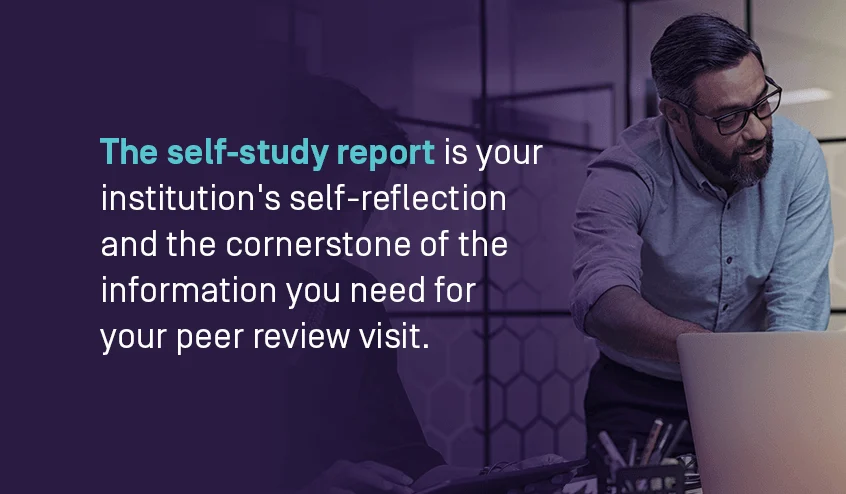
Higher education students, families, and faculty share concerns over an unprecedented mental health crisis among students on our campuses. As awareness of mental health challenges grows, institutions are feeling the pressure to create more supportive learning environments. But mental health struggles are often invisible, making it challenging to identify and help the students who need that support most.
Some education leaders are solving this problem through strategic use of student surveys. This guide will explain how your institution can leverage feedback to spot and address mental health challenges.
Why higher ed students need support for mental health
A recent U.S. News survey found that 70 percent of students have struggled with mental health challenges, including anxiety and depression, since starting higher education. Female students are especially likely to report mental health struggles, with 77 percent doing so, but the proportion of students struggling remains well over half regardless of sex and race.
Despite the prevalence of mental health issues, only 37 percent of respondents to this survey looked for mental health support from their institution, with many deterred by past negative experiences, social stigma, or skepticism about mental health care. But of the respondents who have received support, the majority have found it sufficient to overcome or manage their challenges. These numbers reveal three key insights:
- The mental health crisis in higher education is real and needs a response from institutions.
- Mental health support resources can succeed in improving student wellness.
- Institutions must be proactive in offering these resources because the students who need them most may not seek them out.
Spotting struggling students through feedback
A proactive approach to student mental health support depends on spotting the students who need help and sharing appropriate, timely resources. For institutions seeking to recognize struggling students sooner, feedback is the key data source. Here are six ways feedback can help you spot students experiencing mental health challenges:
- Anonymity: Keep student wellness surveys anonymous to encourage candid sharing, and use the aggregated data to identify trends and allocate support resources. At the same time, you can end surveys by allowing students to voluntarily identify themselves if they would like to learn more about your institution’s resources or receive support. For students who show indications of mental health challenges but do not identify themselves, include an automated message encouraging them to contact your mental health counseling center.
- Careful question selection: Include questions about feelings of stress, anxiety, depression, loneliness, and social isolation. Since some students may struggle to recognize these challenges in themselves or be averse to the labels, incorporate some more objective questions about sleep patterns, social engagement, and motivation. Open-ended questions can help you understand the diverse needs and challenges students experience, and you can use AI-powered sentiment analysis to aggregate these responses if you have cutting-edge student survey software.
- Real-time data collection: Mental health struggles can escalate quickly and sometimes require urgent intervention. Real-time data collection through survey software equips your institution for agile responses to feedback.
- Predictive analytics: Predictive analytics based on demographic data, academic performance, and engagement with support services can trigger early alerts, helping support staff reach out to offer prompt support even if students avoid identifying themselves or seeking help.
- Personalized communication: Implement various communication styles and channels to suit diverse student cultures, languages, and preferences. For urgent cases, implement a fast-track counseling procedure to ensure students receive timely support.
- Closing the loop: To maintain trust and encourage responses to future surveys, it’s vital to close the loop by showing students how your institution has listened and responded to feedback. Publish regular reports explaining how student input has guided changes, like mobile-friendly appointment booking or more diverse therapy options.
4 strategies for supporting student mental health
With a reliable feedback system for identifying struggling students and a clear picture of student mental health at your institution, you can step in with informed interventions to help your students flourish. Try these four strategies to promote mental wellness on your campus.
Comprehensive mental health services
Ensure your campus has the full complement of mental health services, campus resources, and qualified professionals your students need. Along with traditional counseling sessions, provide a 24/7 hotline and telehealth counseling for urgent cases. Consider offering online counseling as an option for all students, as many today find online interactions more approachable than face-to-face communication about sensitive topics. Recruit diverse counselors and clinicians to help all your students find a therapist who they feel understands them.

Proactive wellness initiatives
Discussions of mental health often jump to the challenges, like depression and anxiety, that many students face. But all students can benefit from proactive measures to help them cultivate mental wellness and resilience. A proactive mental wellness program on your campus might include:
- Stress management and emotional resilience workshops to teach healthy coping mechanisms.
- Opportunities for students of all fitness levels to engage in physical exercise.
- Mentorship and support groups.
- Designated stress-relief zones where students can go to relax in a calming environment.
- Spaces for students to practice prayer, meditation, and mindfulness.
- Tranquil green spaces.
Open conversations
Even as awareness of mental health issues improves, perceived stigma and misunderstandings still deter some students from seeking the help they deserve. The most effective way to overcome these obstacles is to normalize open discussions about mental health on your campus. Lectures, seminars, support groups, and social media pages are all excellent forums for educating students and faculty about mental health, sharing personal experiences, and busting myths.
Balance and flexibility
Academic stress is one of the top contributing factors to mental health struggles for postsecondary students. Relieve this stress for your students by providing:
- Flexible pathways: Establish clear policies for flexible deadlines and mental health leave for students whose mental health challenges are impacting their academic progress.
- Alternative grading: For students experiencing serious test-related anxiety, consider alternative assessment methods like research projects that allow them to demonstrate competence with less psychological pressure.
- Success coaching: A success coach can help students navigate academic challenges related to their mental health struggles and recommend the most relevant support resources.
Support student wellness with Watermark
Student feedback is a valuable resource for institutions looking to spot and address mental health challenges. But the quality and quantity of feedback you get depends on the student survey tools you use. For insights to promote student flourishing, try Watermark Course Evaluations & Surveys.
With Course Evaluations & Surveys, you can:
- Increase response rates through learning management system (LMS) integration and mobile-friendly survey interfaces.
- See feedback data in real time for swift, informed action.
- Access a suite of complementary solutions, including Watermark Student Success & Engagement with its predictive analytics for early interventions.
Request a free demo of Course Evaluations & Surveys today to support student wellness at your institution.
















































































































































































































































































































































































































